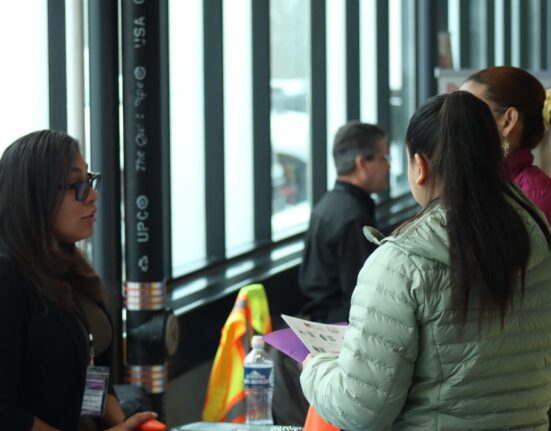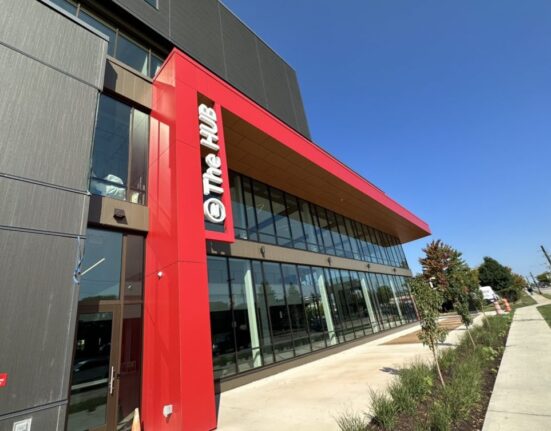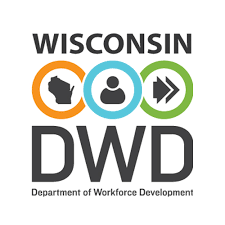This article first appeared in the Blueprint365 magazine. Click here to request a complimentary copy.
Not another nickel.
That’s what Wisconsin State Assembly Speaker Robin Vos said University of Wisconsin System employees would get, unless UW cut diversity, equity and inclusion out of its budget.
Over the summer, Vos led the Republican-controlled Assembly to cut $32 million out of the University of Wisconsin System’s budget – the same amount it spends on DEI salaries and programming. Governor Tony Evers vetoed that change.
After a UW-Madison administrator told the student government that no DEI positions would be cut, despite the political pressure to do so, Vos went after the workers, threatening to cut their scheduled four percent cost-of-living raises if UW didn’t comply.
On Tuesday, Vos made good on that promise. The Joint Committee on Employment Relations eliminated the promised six percent cost of living increases over the next two years for all UW System, about half of the state’s workforce. While Vos said he was open to restoring the raises if UW submitted to legislative approval for any new positions, the message is clear: Vos wants DEI defunded. Now.
At the national level, the Supreme Court surprised no one by undermining a key component in diversity in higher education, ruling that colleges and universities are not allowed to consider race as a factor in admission decisions.
While not directly related to DEI in the workplace, that ruling is another bullet point on the list of anti-diversity measures in recent months.
Meanwhile, in the private sector, it’s not so much open hostility as fatigue and attrition.
A recent report from LinkedIn found that chief diversity officer hiring – placing diversity at the highest level of executive leadership – rose 168 percent between 2019 and 2021, but declined by almost five percent in 2022. That could just be a natural leveling off after the sharp increase, or it could be a signal of a longer-term downturn.
Despite the hostility, workers continue to value diversity. A Pew Foundation survey found that 56 percent of workers in companies with 10 or more employees think an intentional focus on diversity at work is a good thing. And that’s higher among the upcoming generation – among workers 18 to 29, it’s 68 percent. Further, 62 percent of all workers say it’s important to have a workforce made up of people of different races and ethnicities.
We spoke with a number of people doing DEI in the day-to-day about how they’re seeing things at this moment, a moment that feels like an inflection point. Most said the work remains important and they’re undaunted, but the way they talk about the work might need to change.

Risk and reward
It’s not hard to pinpoint what led to that massive jump in DEI jobs in 2020. The murder of George Floyd in the midst of a pandemic, when daily patterns of existence were halted and people could focus, sparked a global protest movement and prompted just about every brand to make all manner of statements about equity and inclusion. And it prompted corporations and government agencies to really listen – at least for a moment – to the needs of their most marginalized workers, and hire executive-level positions to help meet those needs.
“It was sort of en vogue to go on your social media accounts, and you weren’t gonna get any pushback for signaling support for diversity, equity and inclusion,” says Dr. Louis Macias, who was director of diversity, equity and inclusion at the University of Wisconsin Police Department when the protests started. Now Associate Dean for Diversity, Equity and Inclusion at the UW College of Agriculture and Life Sciences, Macias said it’s not hard to tell now, three years later, who was serious.
“If you’re signaling support for these values (in 2023), you probably mean it,” he says. “You’re not doing it for the PR, you’re not doing it for kicks. This interesting dynamic has been a real evolution over a few years, where we’re actually more likely to reap the benefits of signaling these values as important. But at the same time, there is a greater risk, just from a different place.”
That risk is mostly reputational in some sense, as companies that signal a commitment to equity can be labeled as “woke” by social media or politicians, but any damage done by boycotts or backlash tends to be short-lived.
But the risk is a bit more tangible for people like Macias, whose job and livelihood hang in the balance of political whims.
It’s worth the risk, though, Macias says, if the goal is to actually create a diverse workplace or educational institution.
“If we want to increase diversity in our institutions … signaling is going to become really important,” he says. “Those communities want to understand that the university, despite the Supreme Court decision, is committed to these values in action. Not just on a website, but truly committed to these values.”
Annette Miller, founder of the DEI consulting firm EQT By Design, says the tumult over the last three years hasn’t necessarily resulted in any real permanent change in either direction.
“I would say that (DEI) is in the same state it’s always been,” she says. “The US knows that it has problems with race relations. And I think structurally, it’s always had conflict and tried to figure out how to solve it. And we keep going through iterations of what that looks like.”
Other practitioners say the work is more important, and the commitment stronger, than ever.
“I would say it’s challenging right now. You have pushback, you’ve got political ideology tied in there. It’s a tough thing,” says City of Appleton Diversity and Inclusion Manager Timber Smith. “But if you’re talking about the work – which, to me, is community building, belonging, those things – it’s getting stronger than ever.”
Smith is quick to point out that the City of Appleton is not just hopping on the DEI bandwagon – they established the position he now holds in 1997. When the commitment has already been in place that long, neither the upheaval of 2020 nor the backlash of 2023 is going to have very much impact.
“The need for and the business case for diversity and inclusion remain the strongest it ever has been,” said Dr. Renita Robinson, vice president for diversity and inclusion at Prevea Health in Green Bay. “The evidence … is so irrefutable, even naysayers know they have to do something. They may not agree that they have to hire a VP of diversity and inclusion, but they know they better at least hire a coordinator, start mining the data and having some conversations so that they can say we’re not tone deaf.”
The resistance is real, though, Robinson says.
“There’s always jockeying, and all of this kind of fear tactics being employed to try to make sober-minded people act like they don’t have good sense,” she says. “You have some of the issues associated with people who have been used to having power feeling threatened … There will be these last bastions of primarily aged white men who are saying, ‘hell no, we won’t go’ … I think that what’s going to happen is the cumulative pressure of people who really have a good understanding of the importance of diversity and who are mining the data and the research that is saying that diverse companies and diverse workplaces are faring better, I believe that is going to overwhelm those last bastions.”
“I think that we’re in that middle place right now where there is going to be resistance. It’s natural,” says Elizabeth Priller, director of diversity, equity, inclusion and belonging at the insurance company Quartz Health Solutions. “People are self preserving. And they’re afraid of what they don’t know. But I think that (DEI is) just going to become part of the fabric of our nation.”
Miller, of EQT By Design, says it’s not just the active resistance we have to worry about. There’s also a general malaise.
“After a while, people fatigue and they’re not really sure what the next step is,” she says. “I think people are depressed. I think people feel hopeless. And I think that there’s no clear direction. There’s a lot of erosion of a lot of different things. I don’t think people know how to trust information … (Most people) probably would agree that change needs to happen. But when they’re experiencing the change, they’re so uncertain. They don’t know where they fit.”
Smith sees something similar in his work.
“We are a melting pot in the US, and I think people want to be a part of whatever that is,” he says. “At the same time, where can you get agreement, and can you get people to coexist? I think people are struggling right now. They don’t understand what coexisting means.”
“You have some of the issues associated with people who have been used to having power feeling threatened … There will be these last bastions of primarily aged white men who are saying, ‘hell no, we won’t go’ … I think that what’s going to happen is the cumulative pressure of people who really have a good understanding of the importance of diversity and who are mining the data and the research that is saying that diverse companies and diverse workplaces are faring better, I believe that is going to overwhelm those last bastions. Dr. Renita Robinson
Does DEI need a rebrand?
“The realistic part is words matter,” Smith says. “Those words (diversity, equity and inclusion) have now become polarizing and have gained extra definition that maybe they weren’t supposed to. I don’t use those words a whole lot. If you ask me what I do, even though I have (DEI) in my title, I do community uplifting. I do community engagement.”
Juan Corpus, vice president of diversity, equity and inclusion at the Northeast Wisconsin based economic development agency The New North, agrees.
“(In response to) the backlash, (organizations are) not getting rid of the roles, but maybe changing the brand,” Corpus says. “People are pulling away from the DEI brand. But they understand that they kind of need it. This is a weird circle. To survive from a business standpoint, you have to evolve. And I think people are struggling to evolve who weren’t at the table back in 2020, and thought maybe it was just a fad … However we can get folks on board, as long as there are sustainable actions, if we’re really trying to actively be intentional, and we’re trying to put in the work, I think I’m okay, personally, if the branding is different.”
Corpus notes that it’s also important to communicate what we mean when we say diversity, and whom we’re trying to include.
“It’s not just about ethnicity,” he says. “Probably 90 percent of folks who aren’t familiar with the true DEI definition think about (ethnicity) instead of diversity of thought, gender, ageism, all of these other factors that fall into diversity.”
Words matter. Those words (diversity, equity and inclusion) have now become polarizing and have gained extra definition that maybe they weren’t supposed to. I don’t use those words a whole lot. If you ask me what I do, even though I have (DEI) in my title, I do community uplifting. I do community engagement. Timber Smith
Life and death
Whatever you call it, DEI has an outsized impact in the healthcare field, as inequitable health outcomes can be a matter of life and death. That’s why Robinson says the commitment to equity and diversity at Prevea and elsewhere in the sector is stronger – and more important – than ever.
“The diversity piece hasn’t waned, but it has shifted to an emphasis on inclusion in hospitals and healthcare agencies, because of the health equity issues and all of the data that says some groups simply aren’t getting the best care that they could possibly get,” she says. “The lack of diversity in healthcare is … literally costing institutions millions of dollars.”
Priller, of Quartz Health Solutions, concurs.
“(At Quartz), the department actually has grown and the momentum has ramped up. A lot of my colleagues in the DEI space, whether it’s the private sector or higher education, I think they’re overall seeing a downturn or at least neutralization of the efforts. But I would say for Quartz, we are not allowing that to happen … We have somewhat shifted from 2020, where it was more of a social justice approach to D,E and I. I’ve taken more of a health equity approach. We really need to understand the social political climate, but then how is that impacting health? That’s the part that we can control. We’re really taking it from a health outcomes approach.”
Diversity and inclusion in health care will remain important for the foreseeable future thanks in part to federal bureaucracy; Priller and Robinson both note that the Centers for Medicare and Medicaid Services have implemented requirements that attach a significant financial incentive to real and measurable outcomes in health equity.
What’s next?
Whatever words you use instead of “diversity,” “equity” or “inclusion,” it’s clear that the work isn’t going anywhere – even if the legislature succeeds in defunding state positions with D, E or I in the title.
“We’re not trying to necessarily change the hearts and minds of anyone,” says Smith in Appleton. “What we’re trying to do is just create this better community, this better space, where the things you’re trying to do are built with more people in mind.”
Robinson said the next steps, internally at least, are about professional development.
“We’re not just talking about hiring people that are diverse, but we need to have people that are longtime employees of places, people that have institutional history of places. We need to see them moving into leadership positions, and into C suites,” she says.
Multiple practitioners mentioned an oft-overlooked facet of DEI work – data collection, which allows for measurement of both problems and outcomes.
”On one hand commitment is a real thing, and a lack of commitment is a real thing. On another hand … there really needs to be more of a focus on outcomes, more of a focus on tangible action, measurable action, and on defining what success is,” says Macias. “But we don’t do enough of that. And I think that, as practitioners, we lean too much on rhetoric sometimes … There’s a lot of people that are talking about what they think belonging is and how it shows up, but we aren’t really talking about how to measure it.”
Smith said even once the outcomes are measured, there are gray areas.
“Everybody wants something a little bit different in terms of outcomes. That’s always the problem, or always the opportunity,” he says. “There’s always someone who thinks everything’s fine the way it is. You have others who think we aren’t doing near enough, and I’m going to leave if we don’t change or shake this up. But you have most people who are in the middle who are just like, ‘I just want to do right. I want to be better. I don’t have the answers. I’m willing to go along, if I can make sense of it.’”






